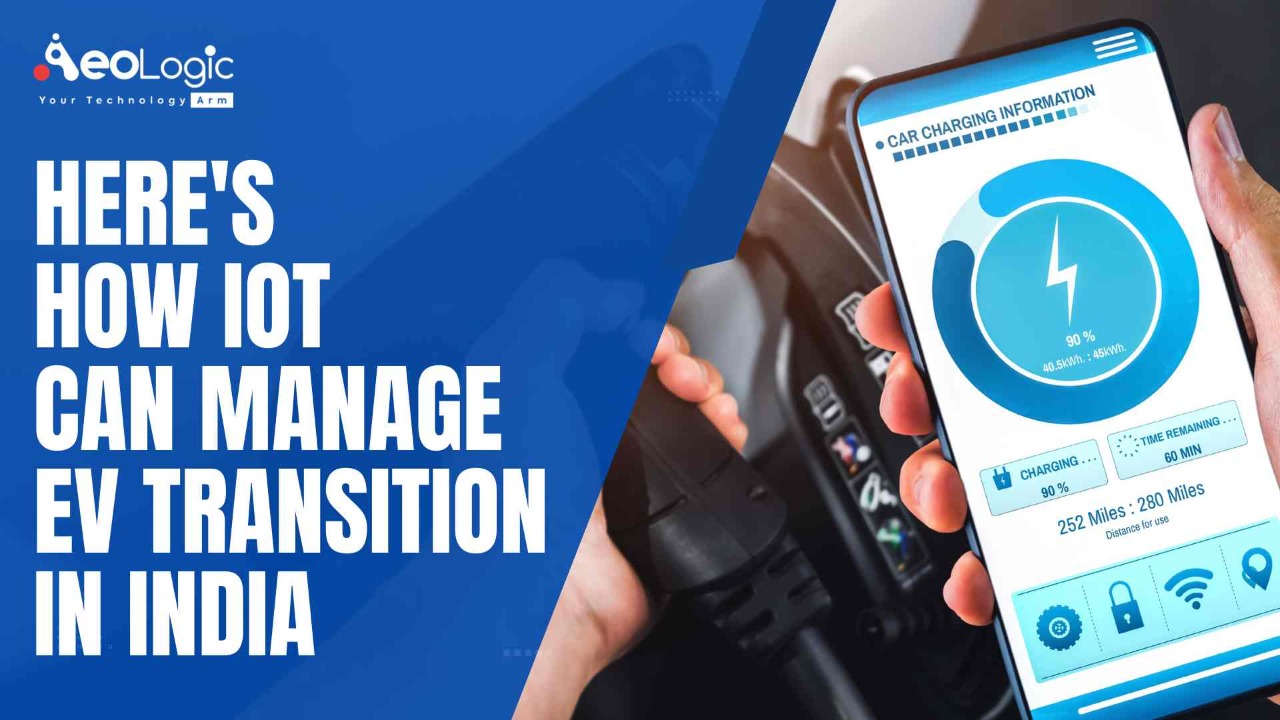The air pollution levels increase and environmental degradation rises. The urban areas are searching for solutions to tackle this problem. One of the major ways to control air pollution in cities is to decrease vehicular pollution. Electric vehicles (EVs) are an innovative step in this course. Electric vehicles are hi-tech machines that depend on several data to generate optimum performance. The performance measurements include acceleration, monitoring speed, charging, mileage, battery management, fault alert, and predictive maintenance systems. IoT can manage EV transition in India. As well as the monitoring of these electric vehicles.
The future of mobility is at a significant point of inflection. Every time oil prices surge or climate change is debated and discussed, Electric Vehicles (EVs) are inevitably mentioned as a part of the solution. Yet, in spite of several new Indian companies entering various parts of the EV value chain, significant capital infused in the space, and large-scale execution efforts, EVs are not conventional till now. It is 2022 and it seems we have hit the inflection point for EVs to take off, finally.
Also read: Exploring the Technology Behind Electric Vehicle Batteries
Following are the ways by which IoT can manage EV transition in India.
Regardless of the launch of products by incumbent OEMs (Original Equipment Manufacturers) and new players, the EV penetration is very low at 0.8%. The splitting of overall EVs in India, by two-wheelers, three-wheelers, and four-wheelers, is 17%, 79%, and 4% respectively.
IoT Enable’s Real-Time EV load Forecasting and Nearby Charging Suggestion
Incapable charging infrastructure is one of the major barriers ahead in the wide acceptance of EVs in India. However, IoT can manage EV transition in India by building servers that are enabled with it. IoT can act as a ball bearing for operators to understand real-time load forecast details on their charging stations (CS).
At the same time integrating IoT into the EV ecosystem will help drivers quickly find nearby Charging Point Operators (CPOs) through IoT-enabled applications. Moreover, this will broadly decrease charging time, operational cost, and freedom from long queues. Also, it will enhance the overall feasibility of charging stations and customer satisfaction. Henceforth, interconnectivity between charging stations is favorable for those charging point operators who are new entrants in India’s EV Industry space.
Battery Management System
The basic functions of the Battery Management System (BMS) are to control and monitor the battery processes. This includes the charging and discharging cycle. Therefore, ensuring battery health and reducing the risk of battery damage by making sure that optimized energy is being delivered to charge the vehicle. The monitoring circuit in BMS monitors the vital parameters of the battery. This contains the voltage, current, and temperature during both charging and discharging situations. It evaluates parameters such as the power, State of Charge (SoC), and State of Health (SoH) and ensures healthiness based on the calculations. Internet of Things (IoT) plays an important role in monitoring and controlling. Since it allows the remote data logging facility for battery parameters, conditions, etc.
Safety and Smart Driving
The implementation of IoT also allows real-time monitoring of vehicles and their major components. It helps in preventive maintenance offered by the technology. Hence making the users find it more reliable.
IoT devices embedded in EVs can provide users with the following features:
1. IoT can manage EV transition in India. It can measure the absolute and relative parameters of the driver, such as acceleration, speed, and others, for offering real-time alerts to ensure better performance.
2. Stealing can be avoided through real-time tracking, geo-fencing, and immobilization. Thus, there will be improved safety and security to lessen the dependence on insurance.
3. It will monitor the vehicle performance data, based on which EV and battery OEMs can enhance the products. The parameters include a range for each charge, operation of a vehicle, performance differences based on age, geography, weather conditions, and alteration in range for each charge over a definite period.
Also read: IoT Drone Technology Integration in Medical Logistics Delivery
Preventive Maintenance System and Fault Alert
Being a high-tech machine, an electric vehicle is bound to experience technical malfunctions. IoT-based fault alert systems assist in alerting vehicle drivers regarding EV faults. Therefore, giving them time to act and address them.
Although EVs are carefully manufactured, there can be situations where the components might fail. To predict this, AI algorithms and remote IoT data can play a crucial role. This facilitates in alerting the EV users ahead of time to fix any possible issues. Also, help in averting a complete breakdown. This will drive towards a better customer experience as they will find it to be reliable.
Conclusion
Overall, IoT plays a huge role in monitoring electric vehicles. The performance parameters include monitoring speed, acceleration, mileage, charging, battery management, fault alert, and predictive maintenance systems. Electric vehicles are an innovative step towards better control over air pollution. And IoT plays an important part.
To know more about futuristic technologies, kindly follow Aeologic Technologies.
FAQs
What are the challenges in electric cars?
There are some barriers to the widespread adoption of electric vehicles. Such as inadequate charging infrastructure, high carbon grid profile, lack of smart and flexible charging, risk of grid overload, and many more.
How can electric cars improve the future of India?
Electric vehicles certainly have the capability to lessen emissions. And aid in addressing climate change. And, we will probably see them replace combustion engines in several instances. Nevertheless, it needs an effort across many different areas to build a sustainable future.









